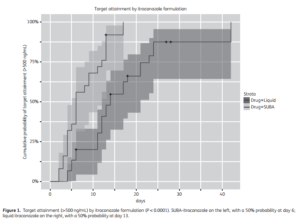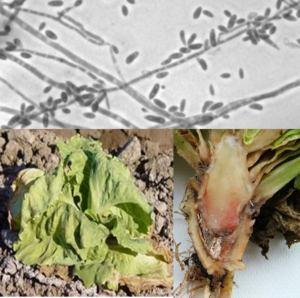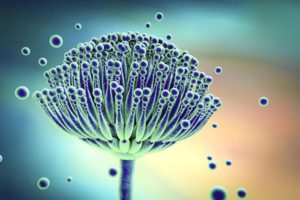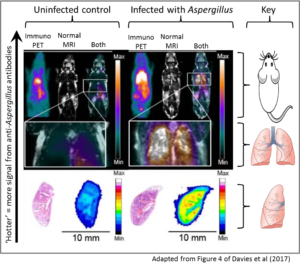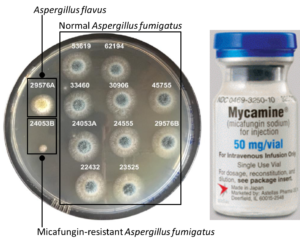Submitted by GAtherton on 22 January 2016
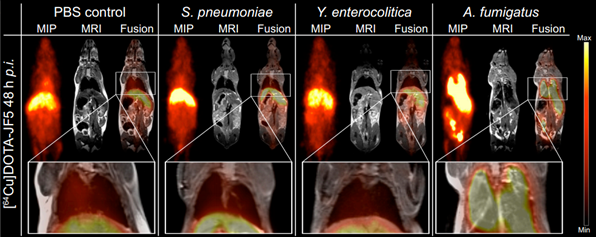
A. fumigatus-infected lung tissue compared with controls.
Invasive pulmonary aspergillosis (IPA) is one of the most common causes of death in patients with compromised immune systems. Early treatment is vital in order to target the disease effectively. However, there is currently a lack of fast, reliable diagnostic techniques, which can lead to critical delays to the required treatment.
Researchers at ISCA Diagnostics (a spin-out company from the University of Exeter) have developed a new clinical imaging method that will enable doctors to tackle fungal infections caused by Aspergillus fumigatus without the need to take samples of tissue or fluid from the lungs.
Professor Christopher Thornton has been working on a promising new diagnostic technique which involves attaching radioactively labelled antibodies on to the structures formed by the growing fungus. This makes the fungus visible on a combination of PET and MRI images, and allows doctors to rule out other causes of lung infections such as bacteria or viruses. Professor Thornton said: “This test allows a more accurate and speedy diagnosis of an infection which can kill those who have a weakened immune system. This is the first use of this cutting-edge technology in fungal disease diagnosis and we hope it will keep more people alive. It is estimated that as many as 200,000 people globally die of this infection each year. This technology has the potential to bring about a radical shift in medical practice around the world and will act as a paradigm for detection of other potentially fatal diseases
News archives
-
Title
Date

